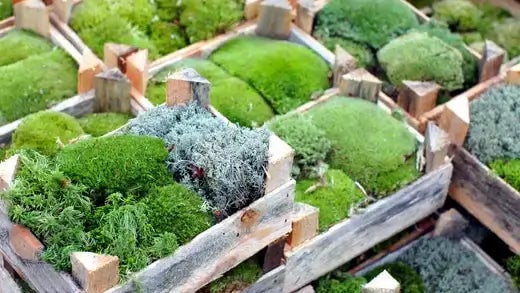The World Of Fertilizers Decoded
As we all know, our plants need nutrients to prosper and remain healthy.
The question is, what nutrients for what plants? So, we rush down to our local retailers that sell fertilizers and find a large selection of 10-10-10, 0-0-60, and 20-05-10, to name a few. There are some fertilizers on the market that do not conform to the NPK standard coding. Special fertilizer mixtures exist for specific plant species, vegetables, trees, flowers, lawns, etc.
What is NPK? What fertilizer should I use?
First, let's look at the labeling of fertilizers which varies by country in terms of analysis methodology and nutrient labeling, coupled with minimum nutrient requirements.
Macronutrient fertilizers
Macronutrient fertilizers are labeled with an NPK analysis.
N stands for Nitrogen.
P stands for Phosphorous.
K stands for Potassium.
The number found on the fertilizer bag represents the percentage of the chemical elements contained within.
Nitrogen in higher concentrations is applied in the early growth stage. High levels of Nitrogen result in a healthy green plant. There is a flip side. Of the three significant chemicals, burning your plants can cause the most damage. Besides burning a plant, Nitrogen can also reduce or delay the emergence and number of flowers and fruit. Additionally, it can cause a plant to wilt.
Phosphorous content should increase as the season advances towards the stage of flowering and fruit. Flowers produce big and bright blooms with a higher concentration of phosphorous. Phosphorous promotes root growth and fruit set and development. It does not burn your plant like Nitrogen, and since it is less water soluble, using too much will not do significant harm to your plant.
Potassium is the chemical to promote fruit growth. After the fruit set, one should switch to a high potassium fertilizer or supplement your regular feedings with extra Potassium. As with phosphorous, Potassium does not burn your plants. However, an application in combination with other ingredients (sun, water, and rich composted soil) can cause adverse effects on your plant.
The Importance of a Proper NPK Balance for your Garden's Health
In addition to the infamous NPK, there is a variety of chemicals essential to plant growth. Some of these chemicals may already be in your soil, and some not. It depends on your soil type, whether these elements are readily soluble and whether they may have depleted through years of growth.
Consider these elements a vitamin pill for your plant. Just as one takes daily vitamins, the same should be for plants. If you buy a brand-name fertilizer, fertilization these minerals and nutrients are included. A prevalent fertilization method is liquid fertilizers. Properly mixed, liquid fertilizer is sprayed on leaves (foliar feeding), poured directly to root systems, and for drip or other underground irrigation systems included in the water supply. Since it is water soluble, it goes directly into the plant root system for a quick pick-me-up.
How to Safely Make Your Own Fertilizer
Home-based fertilizer production provides an environmentally friendly method to boost soil fertility while offering personal satisfaction. Appropriate materials and proper maintenance enable you to reuse household waste to save money and grow healthier plants. To maintain a successful and risk-free fertilizer-making process, fundamental safety guidelines and best practices must be followed. This section provides a safe procedure for crafting fertilizer, advice on choosing materials and composting methods, and essential safety precautions.
Composting stands out as one of the easiest methods for producing homemade fertilizer. Organic materials decompose into nutrient-rich compost. Start by collecting these materials, then layer them inside a compost bin or designated compost area in your yard. To achieve proper composting results, you should maintain equal portions of "green" materials, which include scraps and grass clippings, and "brown" materials, such as dried leaves and paper. The correct carbon-to-nitrogen ratio for efficient decomposition depends on maintaining this material balance.
Maintaining a healthy compost pile requires regular aeration. Using a pitchfork or shovel to turn the compost pile brings in oxygen, which speeds up decomposition. Maintain the moisture level of your compost like a damp sponge, yet avoid overwatering it to the point of sogginess. Decomposition processes become sluggish when moisture levels are insufficient yet produce foul smells when moisture levels are excessive and risk nutrient loss. After several months of decomposition, your compost will become a dark, crumbly substance suitable for garden application.
Making compost tea is another straightforward DIY method for creating fertilizer. Finished compost is submerged in water for several days to make compost tea, which becomes a liquid that gardeners can strain for soil application or use as a foliar spray. The liquid "tea" contains beneficial microorganisms and nutrients that help accelerate plant growth. You must maintain strict hygiene when working with compost tea by wearing gloves and washing hands properly while avoiding contact with food surfaces to prevent bacterial contamination.
Prioritizing safety is essential during every stage of fertilizer production. Wear protective gear, mainly when dealing with allergies or breathing problems. Garden materials can contain harmful pathogens or mold spores, which makes it necessary to prevent inhaling dust and particles. Your compost bin needs protection from pests because rodents, raccoons, and other animals seek out food scraps. Place a lid over your compost pile and leave out raw meat and dairy products to keep pests away and lower contamination risks.
Finally, be mindful of local regulations. Certain communities establish composting regulations to prevent problems such as odor and pest infestations. If you encounter uncertainties, seek advice from local regulations or agricultural extension offices. Homemade compost and natural fertilizers are generally safe, but garden environments and climates vary. Regularly check how your plants react to your methods and make necessary adjustments. Use proper materials and safety procedures with regular monitoring to produce effective homemade fertilizer that supports your garden and reduces waste with assurance and tranquility.
Read more

Tammy Sons, CEO of Tn Nursery, is a proud member of the leadership network contributor on Entrepreneur.Tammy loves to write about trending news and stories that most evade, like her latest article,...

Those looking for high-quality moss to plant around stepping stones have several options. Nevertheless, not all mosses are created equal. Therefore, if you wish to plant mosses that offer the best ...


